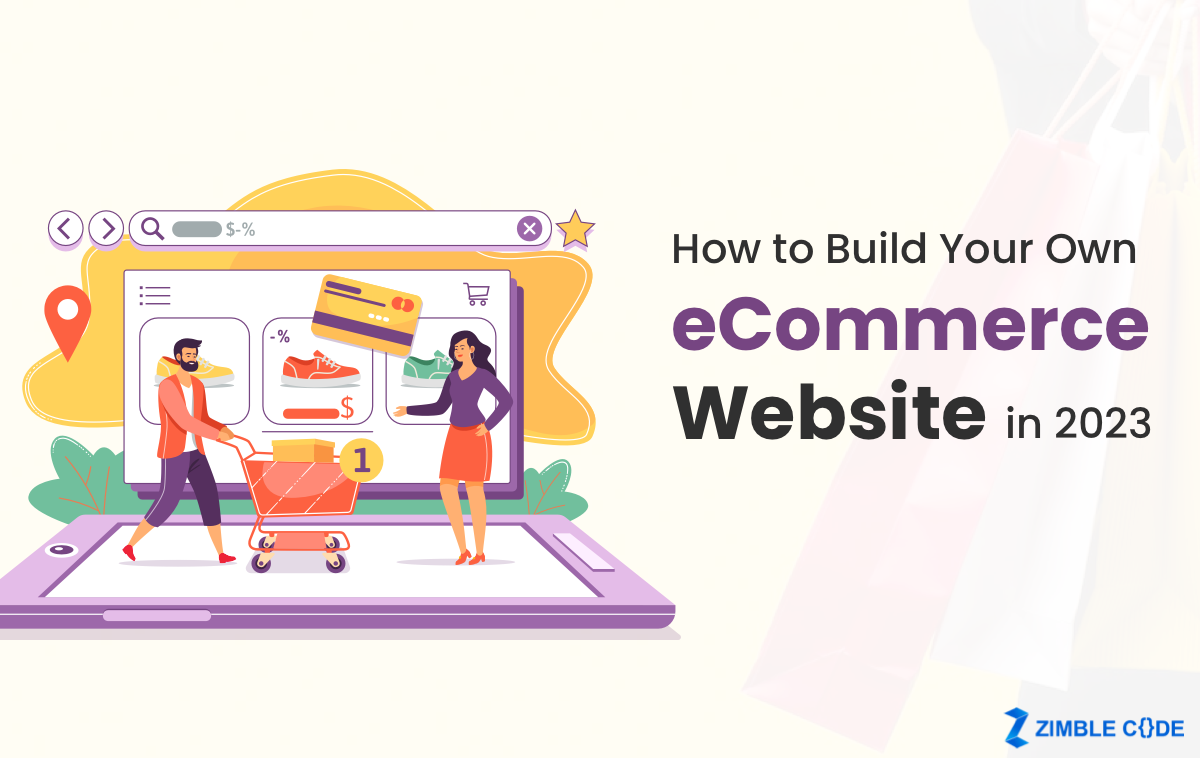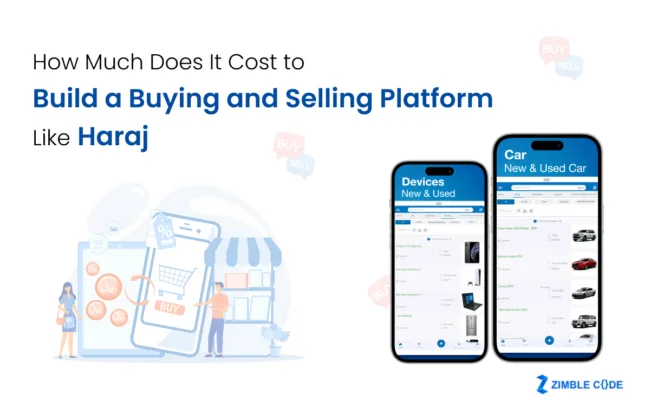With 2.14 billion digital purchasers globally, it is not surprising that the number of eCommerce websites is increasing every day. Nowadays, people can buy everything they want online without worrying about traffic, parking, crowds, or poor weather. Thus, building your own eCommerce website is the best alternative if you want to multiply your revenue.
Fortunately, creating an eCommerce store to sell goods is now simpler than ever. Various eCommerce hosting options and online shop platforms are available to assist you in establishing a professional-looking website without even having coding knowledge.
If you are thinking about how to build an eCommerce Website, you have come to the right place! This blog will guide you through all you need to know to develop an eCommerce website and sell online.
Create a Profitable eCommerce Website in 5 Easy Steps
Now that you have understood the advantages of having an online business let’s go through the basic steps to creating one such eCommerce website:
Step 1: Purchase a Domain Name
A domain name serves as the web address through which a visitor accesses a website. It reflects and symbolizes your complete brand and should provide information about the company’s operations. It may not only assist in creating a website’s trustworthiness, but it can also help distinguish the site from its rivals.
Using a domain name extension might help you stand out even more. Consider domains, such as .store or .shop, to give your online store a unique address and identity. You should be innovative and creative while choosing a domain name. The essential thing to remember is to make it recognizable and easily decipherable.
Step 2: Select a Hosting Plan
Did you know? You need web hosting services to store your eCommerce site’s files to keep your online store running. Choose a decent web hosting package that is efficient and adaptable to future development as your eCommerce business grows. However, always remember that selecting the wrong plan can negatively influence your online shop. It might result in missed sales and opportunities due to poor performance and long page loading time. As a result, it is critical to pick a dependable hosting package.
When choosing a web hosting company, keep the following factors in mind:
- Bandwidth
- Storage
- Speed and optimization
- Security
- Ease of installation and use
- Customer support
Step 3: Select an eCommerce platform wisely
With the support of eCommerce platforms, setting up an online store has become magical to gain astonishing results. You can utilize them to create a stunning website design, thereby improving your customers’ shopping experience and expediting the everyday chore of processing online sales.
However, you must consider the cost, functionality, and usability criteria while selecting a platform for developing an eCommerce website. Spend time weighing your alternatives to locate something that fits your business strategy and can grow with it.
Read Also – Ultimate Guide to Creating an eCommerce Marketplace Like Amazon
Step: 4: Initiate with the Primary eCommerce Website Pages
Remember! The content on your website’s key pages should be accessible and catchy to attract and create maximum purchases from your target audience. There are some specific pages and aspects that every eCommerce website should include, such as:
- Home Page
- About Us and Contact Us Page
- Privacy Page
- FAQs Page
- Return and Refund Policy
- Product Pages with Call To Action
Step 5: Create a Convertible and User-Friendly Design
After initiating the journey with core web pages, there is a need to work on the designing aspect of the website. The key idea of a typical user experience (UX) design is to improve a website’s capacity to get inside the head of your customers and sell more things. Meanwhile, user interface (UI) design contributes to a website’s visual features, look, and feel. An adaptable design is essential for attracting clients regardless of the platform used to build an online business.
Begin with a customizable eCommerce template to create an eye-catching, mobile-friendly website design. Furthermore, using an SSL certificate to protect your customers’ data shows that your online business appreciates user privacy and security.
Conclusion
Although eCommerce website development requires time and money, it is worth the investment. Remember that eCommerce is a platform that allows you to generate huge dollars around the clock. Before releasing your eCommerce website, take the time to double-check each page for typos, broken links, and other errors. It may also be required to make a few test purchases to confirm that everything works properly.
Furthermore, you can use various marketing tactics to obtain more exposure and establish a successful internet business. In fact, it is crucial to keep a presence on social media sites and use email marketing strategies to reach the broadest potential audience. But before everything, the most critical question is whether you’re done with your own customized eCommerce website. If not, get in touch with the ZimbleCode team right now.
Frequently Asked Questions (FAQs)
Q1. How long does it take to create an eCommerce website?
Though the difficulty of even full-fledged websites varies, developing an eCommerce website usually takes around 1,000 hours.
Q2. How much does it cost to create an essential eCommerce website?
A simple eCommerce website may be built with a hosted eCommerce platform for roughly $29 per month. If you utilize a free theme and do not need premium add-ons, you will be charged the monthly price and a few payment processing fees.
Q3. How does one go about creating an eCommerce website?
You can utilize a platform that offers templates and tools to assist you in creating and managing your store. You can also use a custom-built solution or a website builder template. Else, you must contact a professional website development company to get your own website.









Leave A Comment